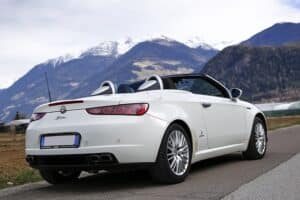Brushless DC motors, or BLDC motors, continue to increase in popularity in industrial applications because of the numerous advantages they offer over their brushed DC motor counterparts. BLDC motor manufacturers commonly build motors for electronics, medical applications, computers, HVAC equipment, and automotive applications. In the industrial engineering industry, brushless DC motors are frequently used for automation and manufacturing engineering applications that improve overall productivity and quality.
Brushed and Brushless DC Motor Differences

Manufacturers design BLDC motors to reduce rotor inertia by using permanent magnets mounted to the rotor and electronic commutation that replaces mechanical commutation. The electromagnetic windings are part of the fixed stator. A motor’s stator produces a rotating field as it receives energy from semiconductor switching circuits. This interaction causes the rotor to turn.
Advantages of Brushless DC Motors
1. High Torque at Low Speeds
Because brushless DC motors can develop high torque with good speed response, they may be used for applications that require variable speeds, such as pumps and fans. The motors achieve a variable speed response by operating in an electromechanical system with a rotor position feedback sensor and electronic motor controller.
Because they develop high torque at low speeds, BLDC motors are good for applications with constant-torque loads, such as cranes, extruders and conveyor belts. It is common for applications to be stopped when they’re loaded, but brushless DC motors develop high torque across their entire speed range.
Thanks to their lower cost and versatility, brushless DC motors are often used as extruder drives. They function by turning a screw that compresses polymer materials. While the action might seem simple the motor offers precision to avoid variations in the part density, which ensures accuracy. Incidentally, the motor offers high torque over its speed range with little to no short-term positional errors.
2. Longevity and Ease of Maintenance
In addition to not having brushes, BLDC motors lack a mechanical commutator. The reduction in the number of components means there are fewer parts that wear out, break, need replacing, or require maintenance. Brushless DC motor manufacturers design the motors to be more efficient, reliable and durable. Some custom BLDC motors even have a lifespan of 30,000 hours or more. Because the motors’ internal components are enclosed, they operate with less noise and electromagnetic interference. The enclosed design also makes the motors suitable for environments with grease, oil, dirt, dust and other debris.
3. Positioning and Actuation Systems
In regard to industrial applications, BLDC motors are often used in variable speed, servo, actuation and positioning applications where stable operations and precise motion control are vital. Common uses of brushless DC motors in industrial engineering are linear motors, servomotors, actuators for industrial robots, extruder drive motors and feed drives for CNC machine tools.

In industrial robots, brushless DC motors may serve as actuators that move mechanical joints for tool positioning in welding, painting and assembly applications. BLDC motors are preferred in robotic applications because of their reliability, power density, compact size and ease of maintenance.
CNC machine tools use feed and spindle drives. Feed drives serve as axis drive motors. Spindle drives provide power and movement for milling, grinding and drilling operations. You’ll generally find BLDC servomotors with electronic controllers in feed drives because of their efficiency, good heat dissipation properties, and reduced rotor inertia.
Sinotech offers a BLDC motor catalog with quality components for industrial engineering applications. If you have a specific need, we’ll gladly help you design and customize BLDC motors to your exact specifications. Contact Sinotech today to learn more about the benefits of brushless DC motors and how our processes will save you time and money.
